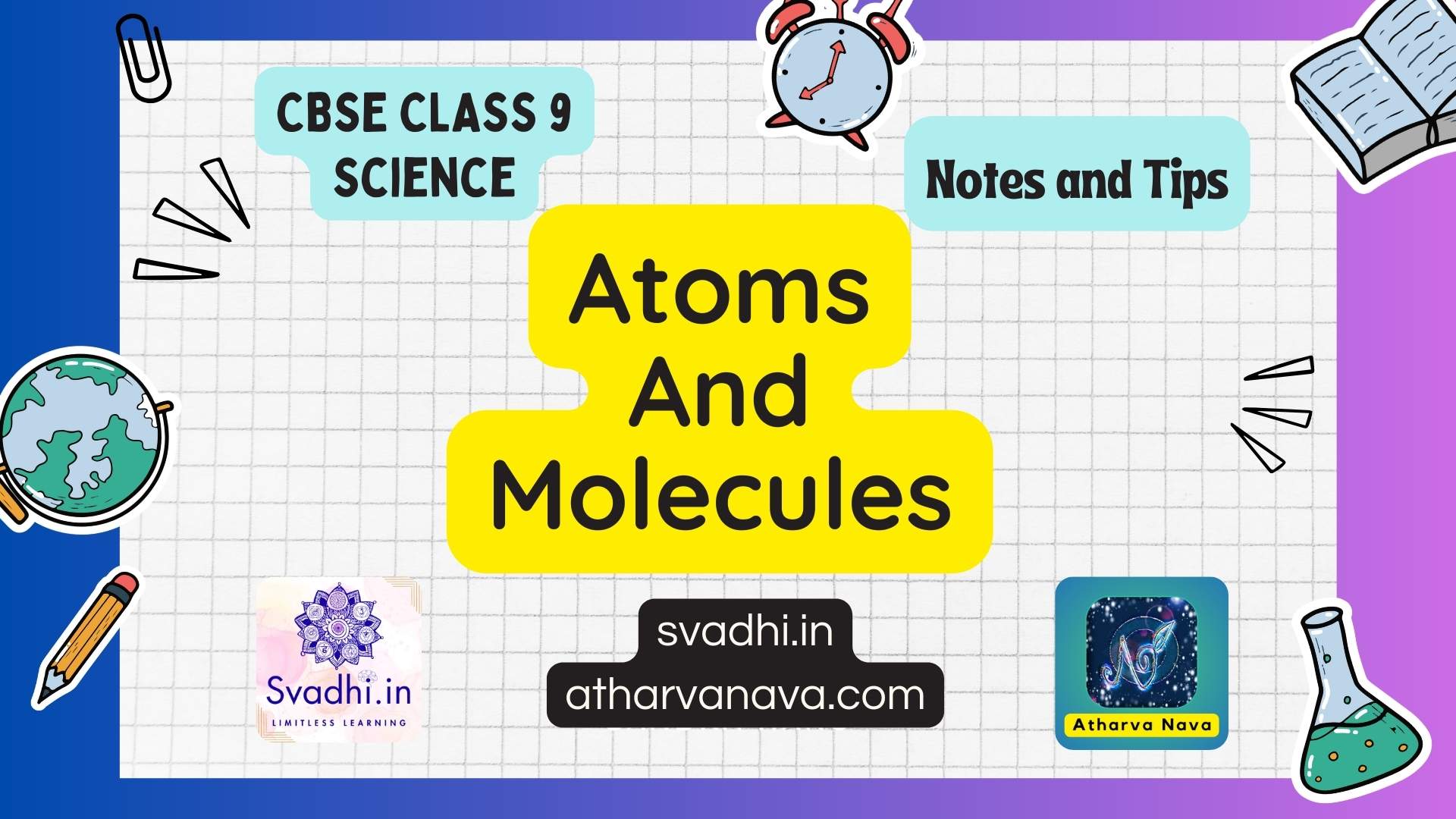Laws Of Chemical Combination
Antoine L. Lavoisier give two important laws of chemical combination.
| Law of Conservation of Mass: It states that mass can neither be created nor destroyed in a chemical reaction. | Law of Constant Proportions or The Law of Definite Proportions: This law was given by Proust as “In a chemical substance the elements are always present in definite proportions by mass”. |
Atomic Theory
This theory was given by British chemist John Dalton. The postulates of this theory may be stated as follows:
- All matter is made of very tiny particles called atoms.
- Atoms are indivisible particles, which cannot be created or destroyed in a chemical reaction.
- Atoms of a given element are identical in mass and chemical properties.
- Atoms of different elements have different masses and chemical properties.
- Atoms combine in the ratio of small whole numbers to form compounds.
- The relative number and kinds of atoms are constant in a given compound.
Atom
Atoms are the smallest particles of an element which can take part in a chemical reaction.
Atomic mass unit: One atomic mass unit is a mass unit equal to exactly one-twelfth (1/12th) the mass of one atom of carbon-12. Example: Atomic mass of H is 1, C is 12, N is 14, O is 16 , Na is 23 etc.
Representation Of Atoms Of Different Elements
Symbols
An element symbol is a one- or two-letter abbreviation for a chemical element name. When a symbol consists of two letters, the first letter is always capitalised, while the second letter is lowercase.
Symbols of Some Elements
| Element | Symbol |
| Aluminium | Al |
| Argon | Ar |
| Barium | Ba |
| Boron | B |
| Bromine | Br |
| Element | Symbol |
| Calcium | Ca |
| Carbon | C |
| Chlorine | Cl |
| Cobalt | Co |
| Copper | Cu |
| Element | Symbol |
| Fluorine | F |
| Gold | Au |
| Hydrogen | H |
| Iodine | I |
| Iron | Fe |
| Element | Symbol |
| Lead | Pb |
| Magnesium | Mg |
| Neon | Ne |
| Nitrogen | N |
| Oxygen | O |
| Element | Symbol |
| Potassium | K |
| Silicon | Si |
| Element | Symbol |
| Silver | Ag |
| Sodium | Na |
| Element | Symbol |
| Sulphur | S |
| Uranium | U |
| Element | Symbol |
| Zinc | Zn |
Molecule
It can be defined as the smallest particle of an element or a compound that is capable of an independent existence and shows all the properties of that substance.
Atomicity
The number of atoms constituting a molecule is known as its atomicity. Example:
| Element | Symbol |
| Argon | 1 |
| Oxygen | 2 |
| Phosphorous | 4 |
| Sulphur | 8 |
| Iron | 1 |
Ion
An ion is a charged particle.
Types of Ion
| Cation | Anion |
| Cannot be broken down to simpler substances. For example, copper, oxygen, iron, hydrogen, mercury, etc. Example: Na+, Ca+2, etc. | A negatively charged ion is called an anion. Example: Cl–, O–2, etc. |
| Chemical Formula | Valency |
| The chemical formula of a compound is a symbolic representation of its composition. | The combining power (or capacity) of an element is known as its valency. |
Molecular Mass
- The molecular mass of a substance is the sum of the atomic masses of all the atoms in a molecule of the substance.
- It is expressed in atomic mass units (u).
Formula Unit Mass
The formula unit mass of a substance is a sum of the atomic masses of all atoms in a formula unit of a compound.

Comments are closed